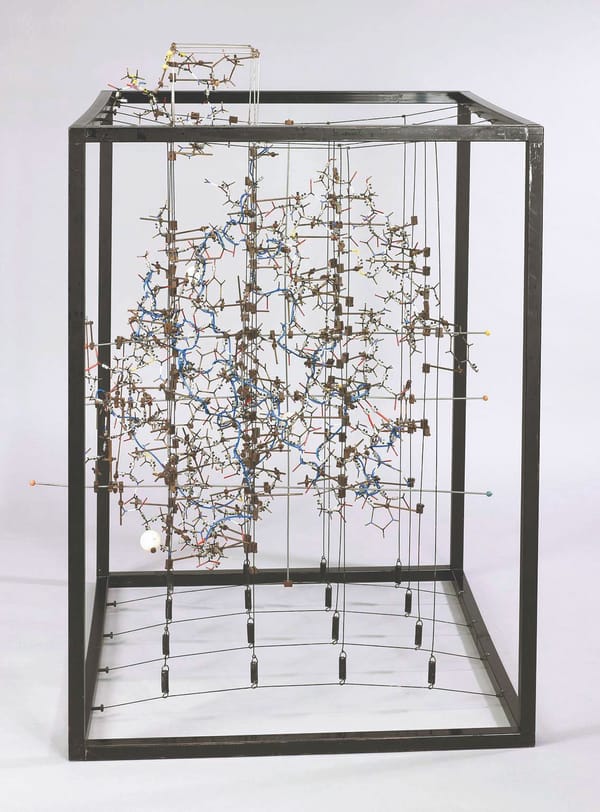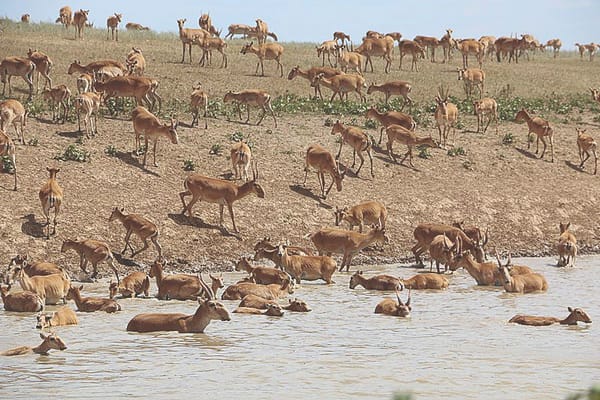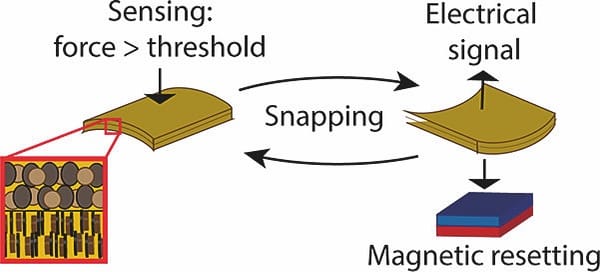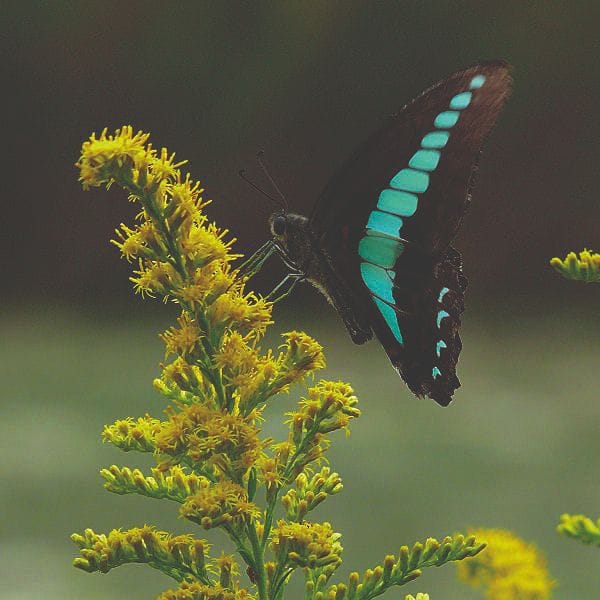Seven Decades of Discovery
From 1949 to the present day, a selection of the science that happens at Imperial

1949
Felix is launched, spawned from the University’s arts and culture magazine, Phoenix, after a need for news amongst the student community.
1950s
After WWII, the scientific community realised the full potential of its possibility and power, and feels an increased need to understand the social context scientists operate in and the ethical implications of their science. Starting with an ‘Ends and Means’ lecture series, and moving on to one named ‘General Studies’, students are able to learn, debate, and discuss politics, philosophy and ethics through the early 1950s.
1953
To meet the demands of society in supplying science and technology expertise, Imperial was required to double in size by Government, from 1953-1963. During this time, the college sees substantial expansion
1953
Physicists Narinder Kapany and Harold Hopkins manage to transmit an image through a bundle of fibres, demonstrating that light can bend. Together with a development in optical cladding, this kick-starts the field of fibre optics.
1956
Physicist Abdul Salam joins Imperial, setting up a renowned Theoretical Physics laboratory. He goes on to be made the youngest fellow of the Royal Society at the age of 33 in 1959, and in 1979 becomes the first muslim to be awarded the Nobel Prize.
1957
Imperial celebrates its 50th birthday, established in 1907 when it received its Royal Charter.
1957
The newly created Expedition Board for overseas exploration sends out its first trip to Karakorum. A student falls down a crevasse - eek! - but is securely roped-up and hauled to safety.
1959
Helen Porter is appointed to Chair of Plant Physiology, becoming the first woman professor at Imperial. It was a while before she had company though: it was 1969 before the second female professor, Joan Woodward, was appointed; the third female professor was Janet Vida Watson in 1974, and in 1976 Anita Bailey was fourth.
1960
The first all-female overseas expedition to St Kitts by zoological students Shelagh Hocking and Anne Phillips takes place. David Attenborough gives them travel advice, although insufficient there apparently - local police refuse to allow unaccompanied women to camp in the open wilderness!
1966
Alan Bishop, soil mechanic pioneer alongside Alec Skempton, father of the field, leads the scientific inquiry into the failure of the Aberfan Dam. The disaster killed nearly 150 people, with over 100 of them children, as the dam overflow swept through a primary school. This leads to safety regulations within the mining industry that still apply today.
1967
The alpha-chymotrypsin enzyme’s protein structure is determined by David Blow using X-ray crystallography. It joins vitamin B12 and haemoglobin as some of the first understood protein structures, with insulin following shortly after.
1968
The HESO-1 satellite travels outside the Earth’s magnetosphere for the first time. The mission of the European Space Research Organisation is headed up by Imperial Physics Professor Harry Elliott and his team, who contribute 23 instruments to the project to measure magnetic fields, cosmic rays, and other energetic particles.
1971
Europe’s first million volt electron microscope, a huge machine covering three floors in the department, is opened by Brian Flowers, Rector of Imperial College. It is used within the Metallurgy department, which changed its name to Material Sciences the same year.
1974
The Imperial engineering degree is expanded to include 2 sandwich years in industry, following conclusions from the Government’s Daiton report aiming to combat declining students studying STEM subjects at University, and the personal guidance of Imperial’s Sir David Huddie and Hugh Ford, who foresaw an advantage for industry-prepared students. In 1978 this became the 4 year course with one industry experience year we recognise today.
1975
Richard (Dick) Selley is made Head of Geology; a leading sedimentologist who was part of the exploration team that discovered the Lyell, Murchison and Hutton oil fields. His later research also encompassed geoviticulture, or the sedimentology behind wine production. He reportedly advised on the creation of Denbies, an award-winning vineyard in Surrey, reachable within an hour’s train ride out of Waterloo station.
1970s-80s
Discussions of possible mergers with other institutions are mooted, including Royal Holloway and Westfield College. A humanities arm is opened in 1980, and in 1988, the college merges with St Mary’s Hospital Medical School.
1980
Physicist David Potter, together with ex-students, starts up PSION - Potter’s Scientific Instruments Or Nothing, which goes on to become produce the Psion Organiser, the first pocket computer, in 1984.
1986
Frederick John Perry, an aerodynamicist and Imperial College alumnus, is part of a team that capture the absolute world speed helicopter record. At Westland Helicopters, he also develops the BERP (British Experimental Rotor Programme) helicopter rotor.
1988
Professor Igor Aleksander becomes the Chair of Neural Systems Engineering in the Electrical Engineering Department. A leading thinker in computational consciousness, he also co-designs the first neural pattern recognition system.
1985-90
Dr. Amanda Fisher researches the molecular characteristics of the HIV-1 virus, allowing the immunosuppressive activity of the virus to be understood. Her research forms the basis for following antiretroviral treatments, and she is currently Imperial College’s Head of the Institute of Clinical Sciences.
1991 The first medical robot, PROBOT, is used to remove prostatic tissue from a patient in a clinical trial, developed by Professor Brian Davies, medical robotics specialist. He goes on to found medical robotics company ACROBOT, which specialises in hip and knee replacement.
1996 Triumph! Imperial College wins their first University Challenge. After losing out to Jesus College, Oxford, in 1986, Imperial College returns 10 years later to take the title - and win it again in 2001.
1997 Following the merger with St Mary’s Hospital Medical School in 1988, Imperial College now merges with the Royal Postgraduate Medical School, and the Charing Cross and Westminster Medical School, forming the Imperial College School of Medicine.
1999 Imperial alumnus Andreas Mogensen graduates. He goes on to train as an astronaut, and in 2015, is the first Danish astronaut to go into space as part of the IRISS programme.
2001-2002
Imperial College chemist, Professor Tom Welton, and colleagues’ research finds solvents that allow for the restoration of the Japanese lacquer used on the Mazarin Chest, one of the best examples of exported lacquer in the world that formed part of the V&A museum’s Japanese collection. Removed from display in 1999 to prevent further degradation, Welton’s research allows it to travel the world again.
2003
Imperial Immunologist, Professor Charles Bangham, discovers the virological synapse - the mechanism viruses such as HIV and murine leukaemia use to spread between cells.
2005
Professor Roger Kneebone sets up the UK’s only Masters in Education course in Surgical Education. This is the first course to link up both the practical and theoretical elements of surgery with social sciences, exploring the connections between the disciplines in Biomedical Science.
2006
The Membrane Protein Laboratory is launched, set up by Imperial College’s Professor So Iwata, with Oxford University’s Professor Dame Louise Johnson. Iwata finds the first clear evidence that proteins change shape to perform their functions, and the laboratory goes on to help determine the 3D shape changes of many proteins and drive research forward in areas including pain and photosynthesis.
2007
Imperial College turns 100!
2013
The first test of the iKnife in patients takes place. Invented by Imperial College’s Dr Zolkan Takats, the knife is heated by an electrical current and cauterises as it cuts through tissue, reducing blood loss. However, this knife is simultaneously attached to a mass spectrometer to analyse the smoke, allowing the knife to tell the difference between cancerous and healthy tissue - in only 3 seconds!
2015
Libby Jackson, Imperial Physicist alumnus, becomes Astronaut Flight Education Manager at the UK Space Agency during Tim Peake’s launch to the International Space Station. Previously a flight director at the ISS, she is able to use her experience to run educational missions around space exploration and the launch.
2016
Imperial College opens the London DNA Foundry with investment from the Government to drive forward synthetic biology. Using a ‘design, build, test, and learn’ approach, the Foundry aims to provide genetic solutions to modern-day problems.
2018
Imperial research team lead by Bill Rutherford finds that photosynthesis happens ‘beyond the red’ limit - plants can use ‘near IR’ in specific conditions when supplies of IR are low. The finding shows that NIR photosynthesis is possible across many plants, and not just isolated species of cyanobacteria, (as previously thought).
2019
Applying a multidisciplinary approach to antibiotic resistance, Imperial researchers and alumni find that a small-molecule can inhibit the DNA repair mechanism in bacteria that is needed for introducing antibiotic resistance genes, thus reversing MRSA resistance to ciprofloxacin.








